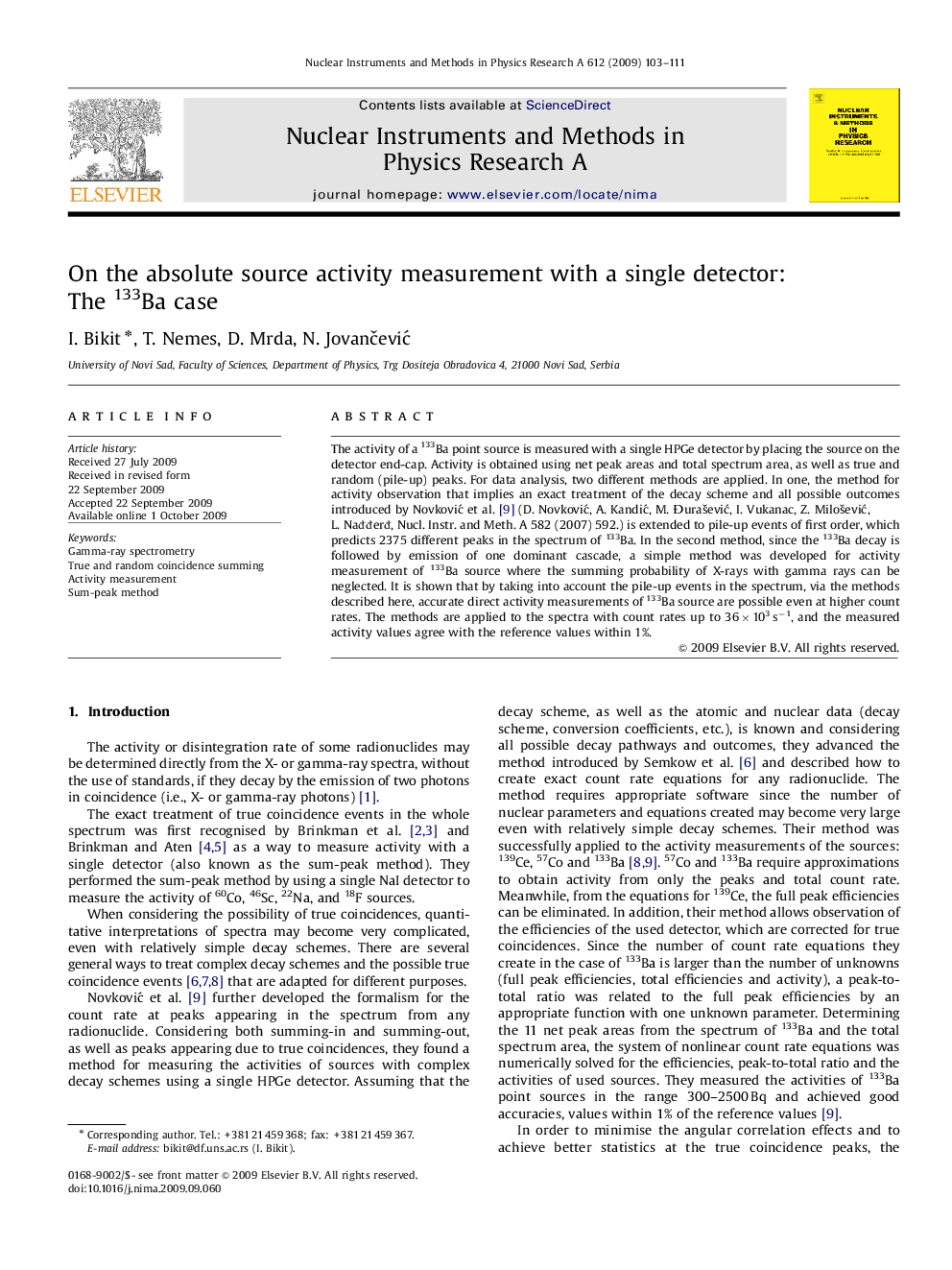| Article ID | Journal | Published Year | Pages | File Type |
|---|---|---|---|---|
| 1826427 | Nuclear Instruments and Methods in Physics Research Section A: Accelerators, Spectrometers, Detectors and Associated Equipment | 2009 | 9 Pages |
The activity of a 133Ba point source is measured with a single HPGe detector by placing the source on the detector end-cap. Activity is obtained using net peak areas and total spectrum area, as well as true and random (pile-up) peaks. For data analysis, two different methods are applied. In one, the method for activity observation that implies an exact treatment of the decay scheme and all possible outcomes introduced by Novković et al. [9] (D. Novković, A. Kandić, M. Đurašević, I. Vukanac, Z. Milošević, L. Nađđerđ, Nucl. Instr. and Meth. A 582 (2007) 592.) is extended to pile-up events of first order, which predicts 2375 different peaks in the spectrum of 133Ba. In the second method, since the 133Ba decay is followed by emission of one dominant cascade, a simple method was developed for activity measurement of 133Ba source where the summing probability of X-rays with gamma rays can be neglected. It is shown that by taking into account the pile-up events in the spectrum, via the methods described here, accurate direct activity measurements of 133Ba source are possible even at higher count rates. The methods are applied to the spectra with count rates up to 36×103 s−1, and the measured activity values agree with the reference values within 1%.
